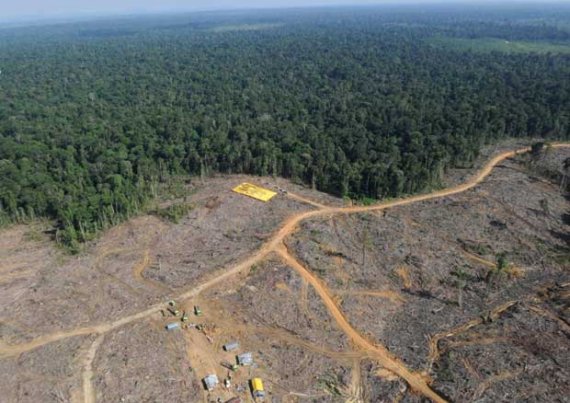Agriculture is the chief cause of deforestation in the world, but the underlying causes are international trade, economic growth and rising meat consumption. This finding comes from a report presented by Wageningen professor of Remote Sensing Martin Herold and others at climate negotiations in Bangkok. Eighty percent of global deforestation can be blamed on the expansion of agricultural land. In Latin America, commercial farming is the major cause, responsible for two thirds of the deforestation there. In Africa and Asia, commercial and subsistence farming are each responsible for a further third of the deforestation. Other more minor causes of deforestation are mining, infrastructure and urban expansion. However, the report emphasizes that the expansion of farmland is not an isolated causal factor. To get a complete picture of the causes of deforestation it is important to look at underlying causes too. The most significant of these are global economic growth and population growth. These lead to increased meat consumption and international trade in farming and wood products.
Make industrialized countries help to pay
‘Unfortunately, these indirect causes are not as easy to measure,’ says Herold. The Wageningen professor has specialized in remote sensing, a way of measuring deforestation with a combination of satellite images and local observation. ‘Remote sensing can ascertain that a forest has been converted into farmland but why that happens is not so easy to explain,’ says Herold. Yet it is important, he says. If deforestation has international root causes, then national policies alone will have no effect and international policies are required too. Herold points to a relatively new form of international policy aiming to combat deforestation: REDD (Reducing emissions from deforestation and forest degradation.) The idea behind REDD is to reduce emissions of greenhouse gases due to deforestation by getting industrial countries to help pay for forest conservation in developing countries. Herold: ‘Good REDD policy is targeted at the cause of deforestation.’ How deforestation is measured – which is essential to REDD – depends on its cause, explains Herold. If the chief cause is the rise of commercial farming, remote sensing can be used to measure it. But if the cause is, for example, firewood collection by the local population, measurements must be taken on the ground.

